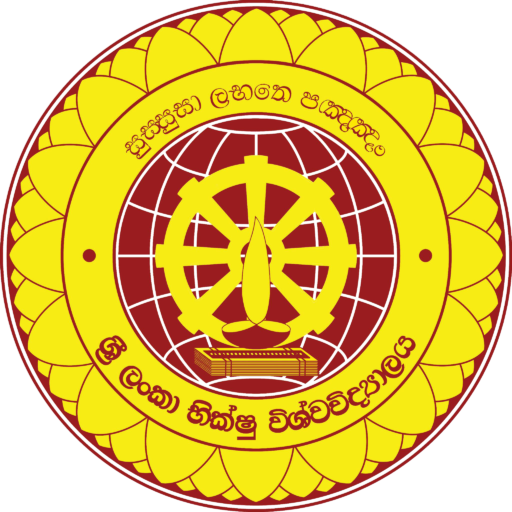Bhiksu University of Sri Lanka – Anuradhapura
During ancient Anuradhapura Kingdom, Arahant Maha Mahinda Thera introduced Buddhism to Sri Lanka at the king Devanampiyatissa’s reign. From then onwards, his followers Sangha, the brethren, dedicated themselves even by sacrificing their lives to protect and nourish Buddhism while being academic and disciplined. As a result of their boundless endeavour, noble, advanced and significant educational institutions began keeping the monasteries as the centre. So, the educational institutions like Mahaviharaya and Abhayagiriya in Anuradhapura, Tissamaharamaya and Situlpawwa in the Southern Province became the first educational institutions for monks. These educational institutions existed in the form of universities at the time. They were the great places for both monks and lay community to research into doctrinal and other academic disciplines. By the passage of time, they got deteriorated due to foreign influences and several other reasons. It was a huge blow to Buddhist dispensation.
The time period from 1873 AD to 1875 AD was a very important time in history of Buddhist education since the commencement of Vidyodaya Pirivena at Maligakanda and Vidyalankara Pirivena at Peliyagoda took place. They became the centres of Buddhist education. With the expectation of widening and awakening of doctrinal studies and other academic researches, those two Pirivenas were converted into universities in that century itself. At the outset, those two Buddhist universities were capable of producing great scholars for the Buddhist dispensation. But, there was no opportunity to continue for a long time. Buddhist monks lost the power and control of those universities. Even the significant names Vidyodaya and Vidyalankara were taken away. Thereafter, those could be seen as the University of Sri Jayewardenepura and the University of Kelaniya.
It was a great disadvantage that there wasn’t any higher educational institute dedicated for Buddhist monks by the mid of the twentieth century. Many educated monks voiced regarding it in various occasions. Having understood the necessity of the institutions like them, the government at that time decided to establish Buddhasravaka Dharma Peetha under the Parliamentary Act No. 106 of 1968 with the great expectation of Buddhist education and it was located in Maha Viharaya premises in Mahamevna in Ancient Anuradhapura kingdom where great Arahants resided at that time. In this way, more than twenty five years the public could witness that it created many great scholars who were capable of engaging in missionary work and other services for the benefit of Buddhist dispensation. It was not possible to maintain it as an academic institution for studying doctrinal matters. Owing to many unavoidable circumstances during the period from 1994 to 1995, Budddhasravaka Dharmapeetha was not capable of achieving its objectives and it just turned to be an institution incapable of enhancing education of monks. With the prevailing situation, we lost another higher educational institution for the Buddhist monks. Having thought that they should establish the smooth flow of Buddhist dispensation, the then government decided to re-establish the Buddhasravaka Bhiksu University under the directions given by the expertise monks. So, the Buddhasravaka Bhiksu University was established under the Parliament Act No. 26 of 1996 with the sole objective of creating Buddhist monks with knowledge and discipline. In this manner, it became the only national university in Sri Lanka for Buddhist monks. Accordingly, with the expectation of creating a Sangha community with academic knowledge and discipline, the Buddhasravaka Bhiksu University was established on 1st of July 1997 in Mahameuna Park in Anuradhapura. The first batch of students to the Buddhasravaka Bhiksu University was recruited in the month of July in 1998. Commemorating Maha Vihara in Anuradhapura era, Buddhasravaka Bhiksu University was located in close proximity to Ruwanweli Cetiya, Jetavana Cetiya and Sri Maha Bodhi Tree.
The University student monks were permitted to pursue their studies in Buddhist Studies as the main subject stream and related academic disciplines consisting of Western and Eastern languages. Since it was located in an archaeologically significant ground, it was problematic to start new constructions. So, by overcoming lots of barriers, the University was relocated in an urban setting gaining several victories by a Parliament Act in the year 2012.
In the year 2012, the Buddhasravka Bhiksu University Act was amended by the Parliament Act No. 15 of 2012 with the change of its name as “Bhiksu University of Sri Lanka”. At that time, the academic atmosphere continued under four Departments; the necessary steps were taken to operate them under two faculties in the year 2013. It is a landmark of the University development. The two faculties were named as the Faculty of Buddhist Studies and the Faculty of Languages and Cultural Studies and the Study Boards of the Faculties were well organised to achieve the objectives of the University Act. While the study of Tipitaka and meditation is given priority, it has been centred in the academic setting to study other religions, technology, and language knowledge which is necessary for missionary work.
According to the sentence 03 in part 01 of Buddhasravaka Bhiksu University Act established on 26th of January 1996, the objectives are given below.
- To train Bhiksu students in accordance with the teachings of Lord Buddha.
- To promote training and research in Buddhist meditation among the Bhiksu students of the University.
- To train Bhiksu students to propagate Theravada Buddhism in Sri Lanka and abroad.
- To encourage the study of and research in Buddhism.
- To promote Buddhist culture and its values.
- To do anything else connected with or incidental to the objectives referred to above.
With the purpose of achieving all these objectives, the University has taken steps to widen its service even to the external student community.
